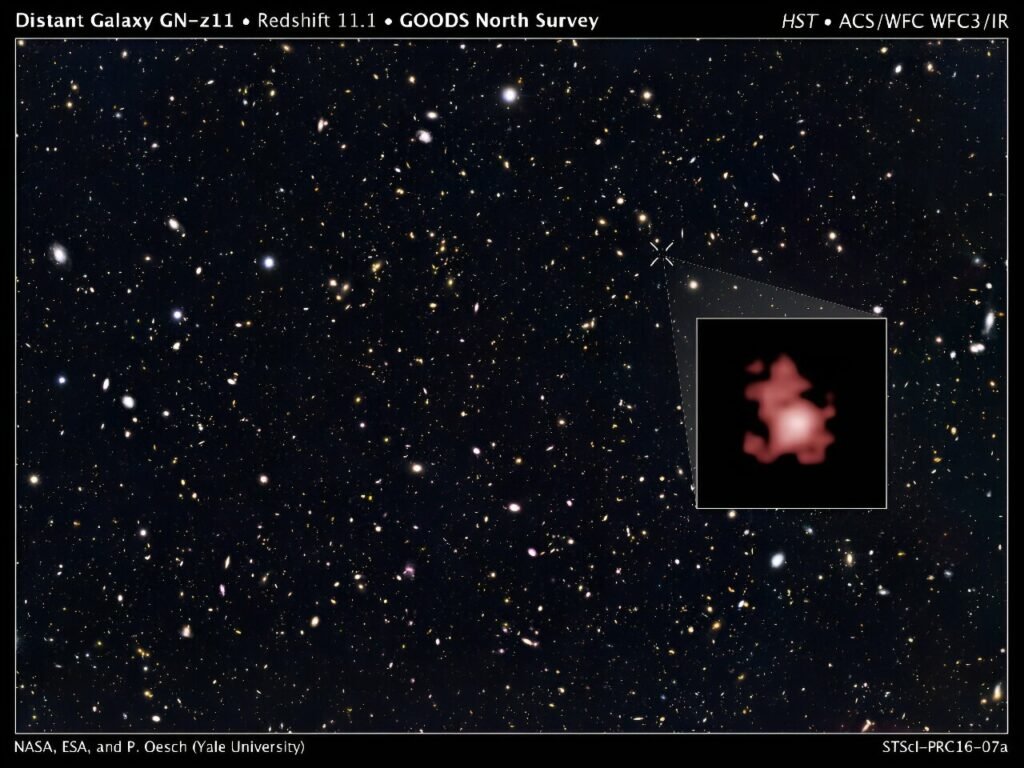Astronomers have detected the oldest black hole ever observed, dating back to just 400 million years after the Big Bang. This revelation, led by the University of Cambridge and involving the NASA/ESA/CSA James Webb Space Telescope (JWST), offers a profound insight into the early universe and challenges our current understanding of black hole formation.
Published in Nature, the black hole, discovered in the galaxy GN-z11, is a few million times the mass of our sun and its existence at such an early epoch in the universe’s history contradicts the standard models of black hole formation. Moreover, like some ancient Lovecraftian god, it’s consuming GN-z11 to fuel itself, and at a rate that exceeds more modern black holes.
“It’s very early in the universe to see a black hole this massive, so we’ve got to consider other ways they might form,” said Cambridge’s Roberto Maiolino in a statement. “Very early galaxies were extremely gas-rich, so they would have been like a buffet for black holes.”
Typically, supermassive black holes, like the one at the center of the Milky Way, are believed to have grown to their current size over billions of years. However, the size of this newly-discovered black hole suggests alternative formation processes.
Current models posit that supermassive black holes form from the remnants of dead stars. These remnants collapse and may form a black hole about a hundred times the mass of the sun. For the black hole in GN-z11 to have reached its observed size through these conventional means, it would have required about a billion years – a timeline inconsistent with the age of the universe when this black hole was detected.


Maiolino calls the discovery “a giant leap forward.” He emphasized that since the early universe was gas-rich, this black hole was provided an abundant ‘food’ source to grow rapidly. The GN-z11 black hole is consuming matter from its host galaxy at an unexpectedly high rate, highlighting the possibility that black holes could either be ‘born big’ or grow faster than previously thought.
GN-z11, the host galaxy of this black hole, is a compact galaxy about a hundred times smaller than the Milky Way. The black hole’s rapid consumption of gas is affecting the galaxy’s development, potentially hindering star formation and eventually leading to the galaxy’s demise. This phenomenon is due to the ‘wind’ created by the black hole as it consumes gas, which can push the gas away and stop the star formation process.
Maiolino and his team plan to use future observations from the JWST to search for smaller ‘seeds’ of black holes. These observations could help untangle the mysteries surrounding black hole formation, whether they start out large or grow rapidly from smaller beginnings.
This discovery, published in the journal Nature, not only sheds light on the early universe but also opens new avenues for understanding the formation and growth of black holes. It challenges the conventional wisdom and sets the stage for a deeper exploration of the cosmos, potentially rewriting parts of our cosmic history.
MJ Banias is a journalist who covers security and technology. He is the host of The Debrief Weekly Report. You can email MJ at mj@thedebrief.org or follow him on Twitter @mjbanias.

